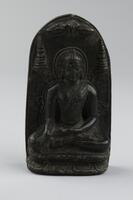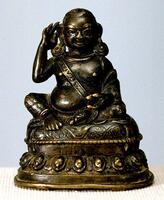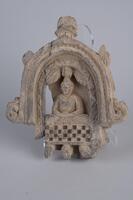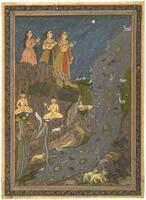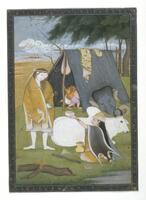C2 - Chanchani - yogic body (main set)
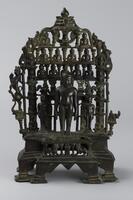
Indian
Jaina altar piece of the 24 [Caturvimsati] Jinas: with standing nude figure of Mahavira cast in the round occupying central area of base, flanked by small tirthankaras; incsribed but unread. From Mysore, Karnataka.
bronze
10 9/16 in x 7 3/8 in x 3 15/16 in (26.8 cm x 18.8 cm x 10 cm)
Gift of Dr. and Mrs. Leo S. Figiel and Dr. and Mrs. Steven J. Figiel
Jaina altar piece of the 24 [Caturvimsati] Jinas: with standing nude figure of Mahavira cast in the round occupying central area of base, flanked by small tirthankaras; incsribed but unread. From Mysore, Karnataka.
bronze
10 9/16 in x 7 3/8 in x 3 15/16 in (26.8 cm x 18.8 cm x 10 cm)
Gift of Dr. and Mrs. Leo S. Figiel and Dr. and Mrs. Steven J. Figiel
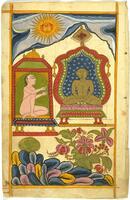
Artist Unknown, India, Rajasthan, Sirohi School
Jina and a monk in a landscape from a Digambara Jain manuscript
ink, opaque watercolor, and gold on paper
11 5/16 in x 7 3/8 in (28.73 cm x 18.73 cm);19 5/16 in x 14 3/8 in (49 cm x 36.5 cm)
Gift of Dr. and Mrs. Leo S. Figiel and Dr. and Mrs. Steven J. Figiel
Jina and a monk in a landscape from a Digambara Jain manuscript
ink, opaque watercolor, and gold on paper
11 5/16 in x 7 3/8 in (28.73 cm x 18.73 cm);19 5/16 in x 14 3/8 in (49 cm x 36.5 cm)
Gift of Dr. and Mrs. Leo S. Figiel and Dr. and Mrs. Steven J. Figiel
Created For
K-12 EducatorK-12 Student
Museum Visitor
UMMA Docent
UMMA Staff
University Faculty
University Student
Rate this Resource
AVG: 0 | Ratings: 0
& Author Notes
Creative Commons by-nc-saLast Updated
December 6, 2019 2:00 p.m.Report
Reporting Policy
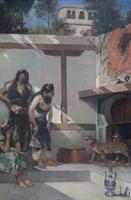
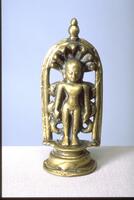
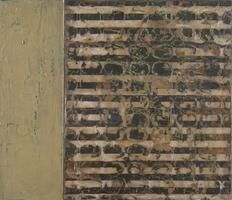
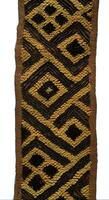



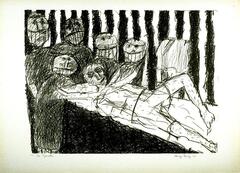

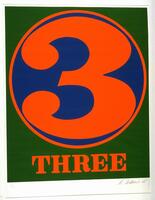
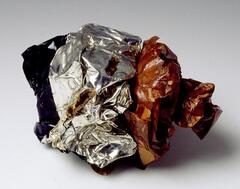
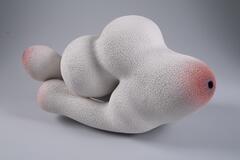
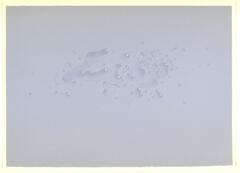
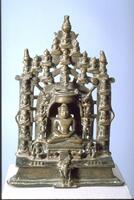
![The jina Malli sits in the lotus position on an inlayed cushion on a tiered throne. Seated with his hands folded in a gesture of meditation, he is surrounded by a number of figures representing other jinas, attendants and demigods. In the center in front of the throne sits the goddess Ambika with a child on her lap. On the first tier of the throne sit two figures that may represent donors. On the next left are nine mounds representing the nine planets [navagraha], five to his right and four to his left. At the base of his seat are two stylized lions and this is flanked by a male and female demigod. On the arch surrounding the figure at his level a standing jina figure is to each side and cauri bearer is on the outside of each of them. At his shoulders, the cross bars of the throne back end in stylized makara heads with jewels hanging from their mouths. A seated jina adorns the arch to each side of his head and elephants surmount them with an umbrella over his head with a dancing figure atop it. The who The jina Malli sits in the lotus position on an inlayed cushion on a tiered throne. Seated with his hands folded in a gesture of meditation, he is surrounded by a number of figures representing other jinas, attendants and demigods. In the center in front of the throne sits the goddess Ambika with a child on her lap. On the first tier of the throne sit two figures that may represent donors. On the next left are nine mounds representing the nine planets [navagraha], five to his right and four to his left. At the base of his seat are two stylized lions and this is flanked by a male and female demigod. On the arch surrounding the figure at his level a standing jina figure is to each side and cauri bearer is on the outside of each of them. At his shoulders, the cross bars of the throne back end in stylized makara heads with jewels hanging from their mouths. A seated jina adorns the arch to each side of his head and elephants surmount them with an umbrella over his head with a dancing figure atop it. The who](/media/W1siZiIsIjIwMjIvMDUvMjUvMnp2bHlnYzJuX2RlZmF1bHQuanBnIl0sWyJwIiwidGh1bWIiLCIyNDB4MjAwIl1d?sha=41927aa38309f645)
